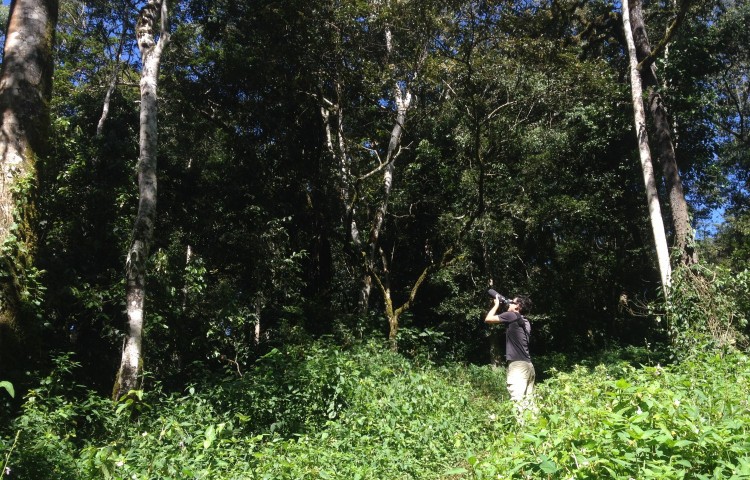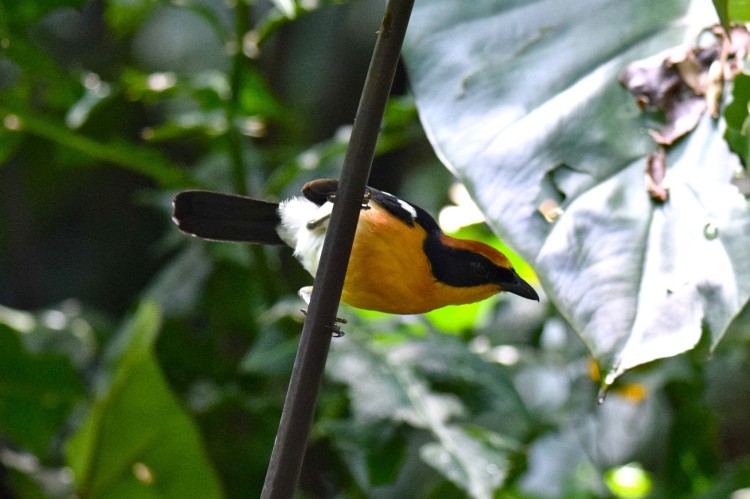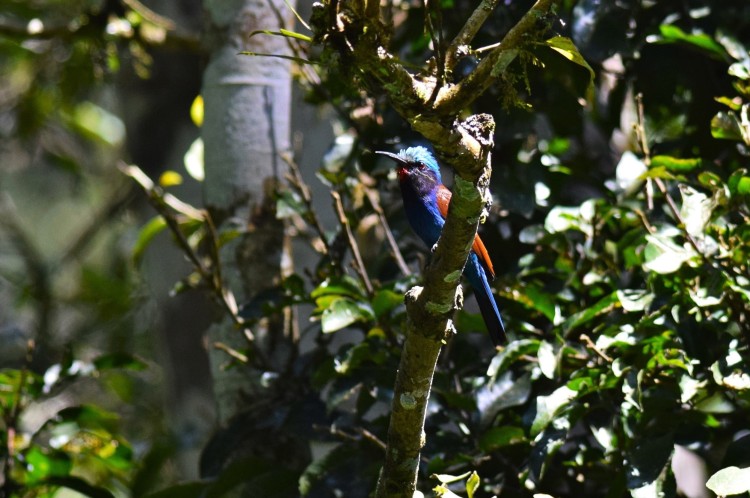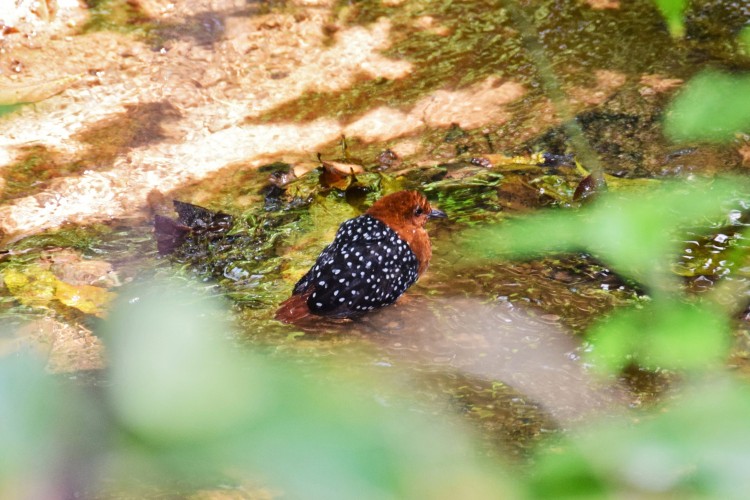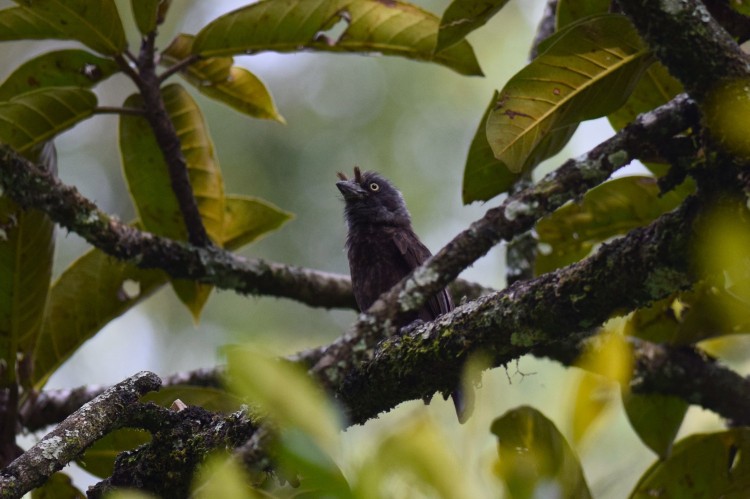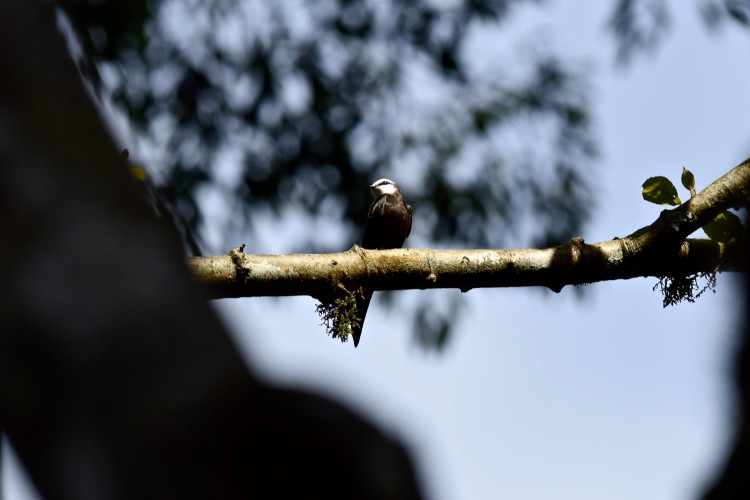
Blue Headed Bee-Eater
November 21, 2015
On a Friday night whim, I decided that the next morning I’d drive over to the Kakamega rainforest for a Saturday morning of birding. I called my friend and guide John, we set our agenda and targets, I charged the camera battery, and cleaned the glassware on the lens. We set our hopes for the bar-tailed trogon, the black billed turaco, the blue headed bee-eater, the white-morph African paradise flycatcher, and the yellow-billed barbet. We both knew a host of other species would also be encountered and that our list omitted many of the area specialties/endemics. Nonetheless, we arranged to meet at 8:30 near the forest station.
After a good night sleep, a bowl of yogurt and granola, and a packed bag with snacks and gear, I headed out for the near two-hour drive. It was uneventful with some blues music keeping me alert. I made it to the junction, where I turned off the highway onto the dirt road. Not long into this section, I found a cargo truck loaded with wood planks that had fallen on its side trying to avoid the mud. The entire community was out helping to offload the wood so that they could collectively right the vehicle. The police were also present, which caused me to think that perhaps the planks were not exactly above board (no pun intended) given the prevalence of illegal logging and wood harvesting.
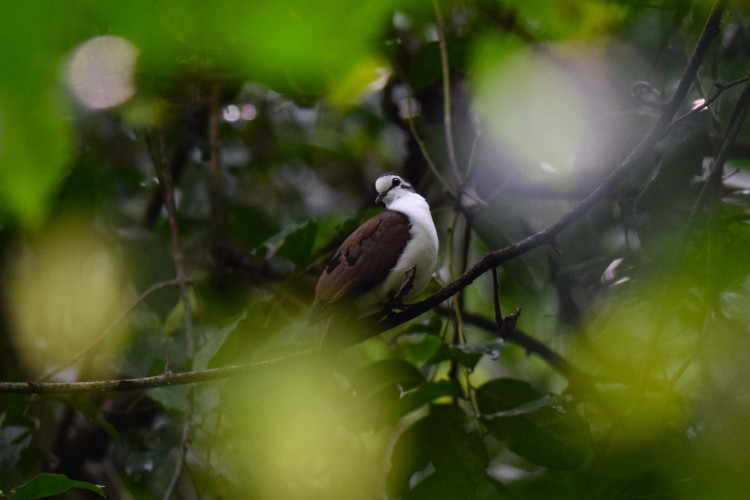
Tambourine Dove
Another five miles and I arrived at the forest station. Along the way I found the forest buzzing with activity. I noted the yellow spotted barbet, multitudes of black and white casqued hornbills, cinnamon chested bee-eaters, many greenbuls, white headed saw-wings, white-throated bee-eaters, European bee-eaters, a lovely black-collared apalis, black-faced rufous warblers, black headed weavers, sunbirds, and a large gathering of at least seven Luhder’s bushrikes. At the office I paid my 400-shilling entrance fee (resident rate) and connected with John. We made the call to try for the turaco and trogon first, given that we knew the bee-eaters were a sure find. We drove back down the main road and made for a trail that is known for taking sunrise walks to the top of the local hill. You can ask any guide—they’ll know this spot. It’s the only one. Seriously. Anyway, this particular part of the forest has a unique make-up of remnant primary old growth that were not culled, mixed within the newer secondary forest. This makes for fruit available year-round within this relatively small swatch of forest. Translation: The black billed turacos don’t have to move around the forest to find their desired food. It’s concentrated here. The problem is that for some reason this particular species of turaco does not like to be seen. It is notoriously shy. Any amateur birders in Africa know that turacos don’t exactly pose for photos. You need to be in the right place at the right time with the camera pointed at the right spot to capture “the shot”. However, the black billed turaco prefers to rush into the vines and branches at the top of the canopy so that the majority of viewing opportunities are comprised of gliding, landing, and scurrying. Not exactly Nat Geo quality stuff.
Regardless, I’d never seen one well (only had one previous momentary glimpse as one flew off). I cannot really qualify that as anything more than a record. So, with the call loaded onto my phone and the Bluetooth speaker in hand, John and I began our game of Marco Polo. We were able to entice a good number of birds to interact with us, and finally two flew over the road, giving us great views of the vibrant ruby primaries. This in and of itself was a real treat. John himself had only seen two in his life. We just saw two within 10 minutes. John was giddy and wanted to try heading into the forest via trail to see if we could get a perched specimen. We also tried for the trogon here, but I’ll cut to the chase: no luck today for this higher altitude forest-dwelling beauty. The turacos, however, were obliging us with their continued calls.
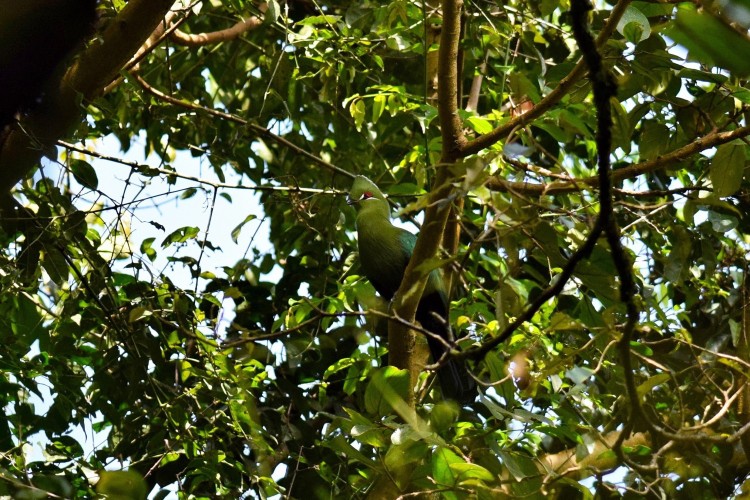
Black Billed Turaco
After about 15 minutes, one individual flew in and perched beautifully for us. We were amazed at seeing it call out and make a variety of calls neither of us have ever heard. We were sad to not be able to record them. It was almost a bugling cough. Turacos do not chirp; they’re too large. But this was perhaps the closest thing to it. Quite special in my opinion. We spent about 25 minutes enjoying the turaco and watched it preen, rest, call, and eat out in the open (though very high up). This was the best viewing experience I’ve ever had with a turaco and, for it to be this shy species, I was thrilled.
We trudged out to the road and made for a forest clearing where Klaas’s and Diederics cuckoos are known to be present this time of year. However, after many minutes we’d only progressed about 100 meters down the trail due to mud. We decided to bag that objective and went back to forest station block to spend time with the blue headed bee-eaters and great blue turacos before the fast approaching rains arrived. We made a quick stop to try for the African emerald cuckoo and pygmy kingfisher, but both were misses. The bee-eaters were zipping through the air, but within minutes, everything went quiet. Then the claps of thunder announced why it’s called the rainforest. We took shelter in a small structure for 45 minutes to let the storm pass. Upon emergence, we found our white-morph paradise flycatcher and also realized that we’d only encountered the first cell of what would be an all-day storm.
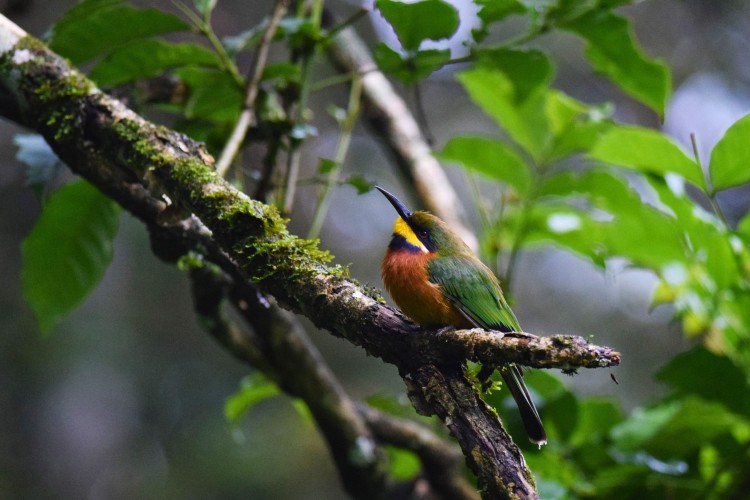
Cinnamon Chested Bee-Eater
We called it a day and went back to the car…to find it standing in three inches of water. Over 30 minutes of pushing finally moved it the 20 meters necessary to free it from the muck. John and I parted ways when I dropped him off, and I briefly stopped at Rondo Retreat Center to inquire about availability for the holiday season. I took a brief walk around their trails and found a cooperative white-spotted flufftail, a red headed bluebill, and grey throated barbets. I then drove back home still wearing my gum boots.
 I’m not satisfied with the blue headed bee-eater photos that I’ve taken so far, and though I have probably spent the most time with this particular species, their behavior makes good photography very difficult. For all but about two months of the year, they spend the majority of time high in the canopy. They descend periodically to perch for a few seconds and then often ascend. Looking at the branch where they land and snapping a sharp, well composed photo feels more like luck than anything else. Moreover, even when “low” they are usually well above eye level, which makes the angles challenging.
I’m not satisfied with the blue headed bee-eater photos that I’ve taken so far, and though I have probably spent the most time with this particular species, their behavior makes good photography very difficult. For all but about two months of the year, they spend the majority of time high in the canopy. They descend periodically to perch for a few seconds and then often ascend. Looking at the branch where they land and snapping a sharp, well composed photo feels more like luck than anything else. Moreover, even when “low” they are usually well above eye level, which makes the angles challenging.